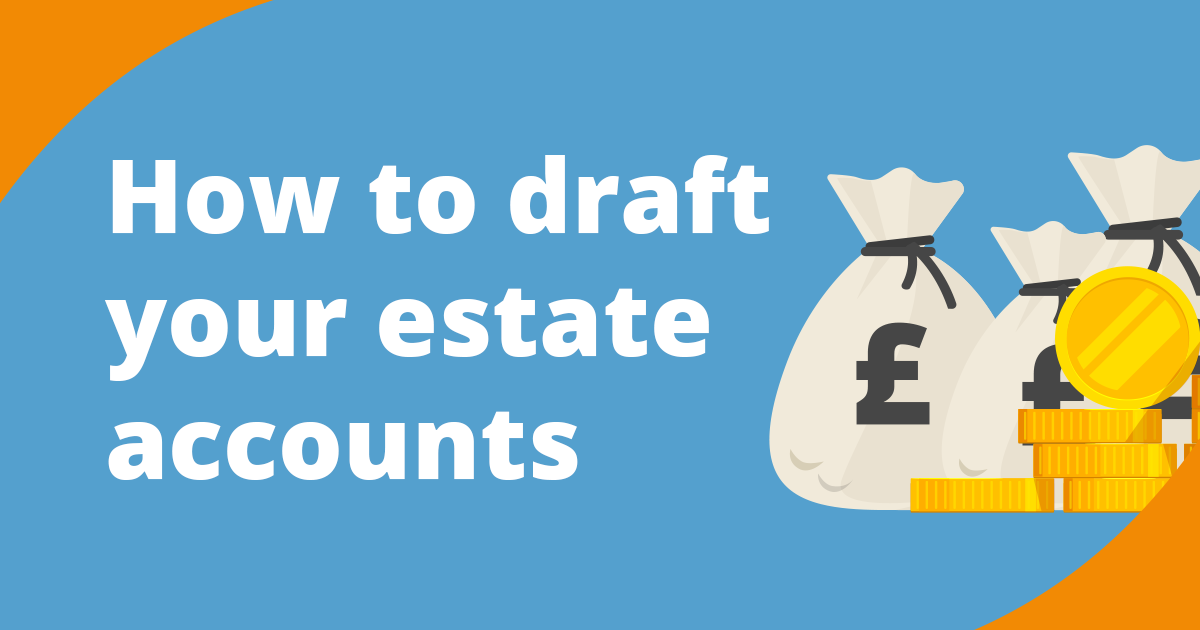It’s now time that you draft the accounts as you have sold the assets, collected the money and paid the debts. This is the home stretch!
We have split Estate Accounts up into 8 sections to make this as easy as possible.
Front Sheet
Kicking off with a nice simple front sheet, this should say what this document is (The Estate Accounts), who’s estate it is (Use the deceased’s full name) and the date they passed away.
Assets
Put all the companies and places that the deceased held assets into a list, write the amount that was held with each, and then put a total amount at the bottom. (Banks, investments, houses, cars etc.). Make sure you use the value of the asset on the day the person passed-away (these are known as date of death figures), we will talk about any changes in these values shortly.
Liabilities
Just like you did with the assets section, put all the debts that the deceased had outstanding when they passed away into a list (things like credit card bills, any mortgages, unpaid household bills etc.). Don’t forget to put a total figure for all the liabilities at the bottom!
Changes During Administration
This section is where you would list any asset (or liability) that changed in value from when you had it initially valued to when it was sold during the administration process. If the deceased owned a property that you had valued at £200,000 (the figure you should have entered on the IHT205 form), but later sold for £220,000, this is where you would list the £20,000 change.
Income
After death, we would class any event where the estate received money like rent paid by a tenant, interest on money held in a bank or dividend payments, as the estate receiving income instead of simply an increase in assets. Just like before, list them, total them!
Expenses
Whilst going through the administration of the estate you are probably aware that there were times that you had to pay out money to complete certain parts of the process. (E.g. Funeral bills, oath fees, estate agent fees etc.). Put all these expenses into this section.
Distribution Sheet
This is the sheet that most people will skip to when they look through your finished set of accounts, it is where you show the total value of the estate and, just like Oprah back in 2004 (“you get a car”), you list who is getting something from the estate.
You should add together the totals for assets, changes, and income, then take away the totals for liabilities and expenses. This final figure should then be divided into the appropriate portions and then assigned to the list of beneficiaries.
Executor Signoff
Finally, there should be a page at the end with all the executors (or administrators) details, where they can signoff that they have looked through the accounts and agree with the figures (they also need to date when they sign).
Put all the above sections together and you have yourself a basic set of estate accounts.
Need help with Estate Management and Probate?
Contact the friendly experts at Steele Rose for help and advice on all things probate and for assistance with your estate management tasks. Call us on 01722 410009 or email us at info@steelerose.co.uk or via our contact page.
Warning: Undefined array key -1 in /home/rose/public_html/wp-content/uploads/cache/f385f91b675244799404d8e8a3b3edc6bc3a386a.php on line 110


